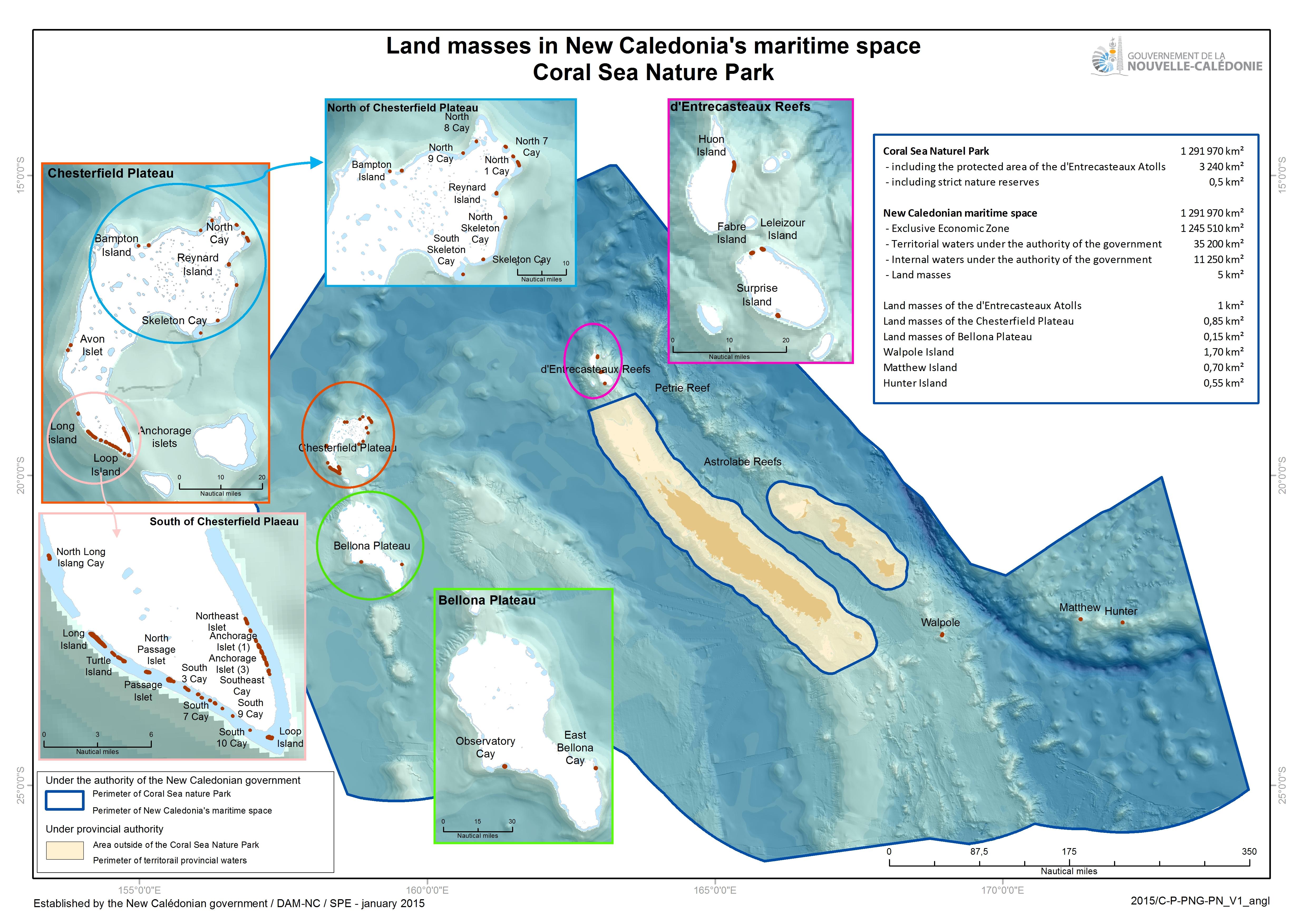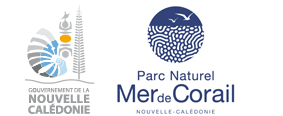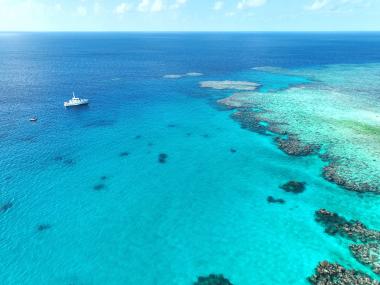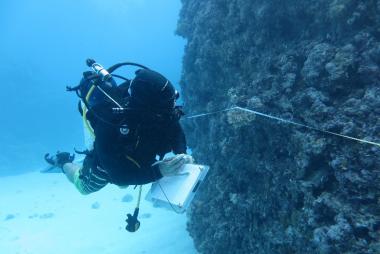Biodiversity
The Natural Park houses 4 different types of ecosystems: deep, pelagic, coral and insular. Coral reefs have developed in the Natural Park and have formed the islands referred to as distant islands : the islands situated on the Chesterfield and Bellona plateaus, the d’Entrecasteaux atolls, the Petrie islands and reefs, as well as the Astrolabe. Walpole Island is a raised coral bloc while Matthew and Hunter are volcanic islands. 41 % of the coral reefs present in New Caledonia can be found in the Natural Park of the Coral Sea. They are exceptionally well-preserved. The Natural Park’s deep environments are all remarkable with more than 500 seamounts and almost 8 000 meters deep in the fosse des Nouvelles-Hébrides. One of the Natural Park of the Coral Sea’s particularities is that it acts as a passing, feeding and living area for numerous species. For example, Great Frigate Birds which nest in the Chesterfield Islands travel as far away as Papua New Guinea to feed; Great White Sharks move between New Caledonia, the Australian waters and New Zealand; Humpback Whales which cross the Pacific before heading South towards Antarctica; Finally, Green Turtles which lay in the Natural Park, feed either in the Greater Southern Lagoon or in the Australian seagrass meadows.




